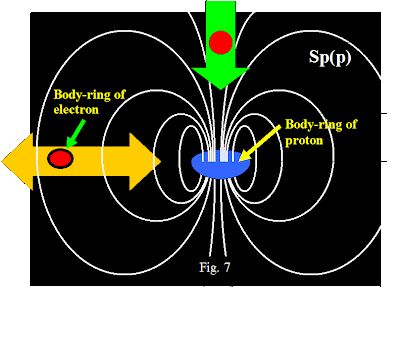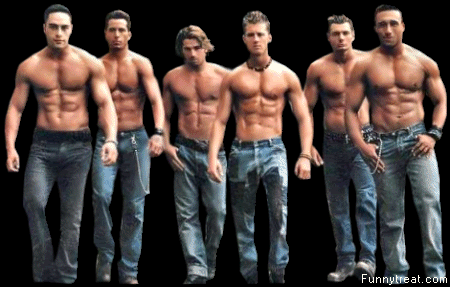That's a relief - there are many fewer 'mid-sized' Asteroids near Earth than was previously thought. There are roughly 19,500 -- not 35,000. But while the risk of impact is smaller, according to NASA, the majority of them remain to be found. Mid-sized, by the way, isn't small - it refers to asteroids in a size range between 330 and 3,300 feet wide, which could destroy a city-sized area were they to hit Earth. NASA's latest scan used the Wide-field Infrared Survey Explorer, or WISE and took two infrared scans of the entire celestial sky, scanning the entire sky twice in a series of infrared photos between January 2010 and February 2011. The scan aimed to find asteroids 'near Earth' - ie within 120 million miles.

NASA's scientists were cautious about the result, saying only that the risk to Earth could be 'somewhat less' now than they previously thought. Scientists also admit there could be 'up to a million' smaller asteroids that have not yet been detected - which could 'cause damage' if they hit Earth. What is definitely good news is that the likelihood of a 'planet-killer' - the mountain-sized asteroids in the 'large-sized' range, above 3,300ft - appears to have fallen more significantly. There are only 981 of these objects near Earth according to the latest estimates, and NASA has found 911 of them.

The scenario, beloved of film directors, where a huge asteroid threatens all life on Earth now looks distinctly unlikely. All near-Earth asteroids that are as big as the one that wiped out the dinosaurs (around six miles across) are thought to have been found by NASA's scans, which use infrared to detect both 'light' and 'dark' asteroids. 'NEOWISE allowed us to take a look at a more representative slice of the near-Earth asteroid numbers and make better estimates about the whole population,' said Amy Mainzer, lead author of the new study, published in the Astrophysical Journal, and principal investigator for the NEOWISE project at NASA's Jet Propulsion Laboratory in Pasadena, Calif. WISE captured a more accurate sample of the asteroid population than previous visible-light surveys because it is difficult for visible-light telescopes to see the dim amounts of visible-light reflected by dark asteroids. 'The risk of a really large asteroid impacting the Earth before we could find and warn of it has been substantially reduced,' said Tim Spahr, the director of the Minor Planet Center at the Harvard Smithsonian Center for Astrophysics in Cambridge, Mass.
 A space station could stay in orbit over mars it would need to have a high technical garden to allow for oxygen waste and a gravitational field. This station needs to provide variety of tasty menus that lift spirits of first astronauts. The thing about space is the “Moon Buggy” is still fully functional ready to go even today. Only the earth climate is inductive to horrendous corrosion. Earth weather leaves almost everything into a corrosive waste like products; this is not a problem more of a challenge. As for having another Earth like planet it would have the benefit with almost zero corrosion, with only ware tare on parts this is minimal. So what can be constructed would be owned by the people or the country that constructed the station and it would be in a lasting state. These built the technology carry a beacon long after their creator. Still to have fully function technologies in space or orbit planets is a costly process. Most will be un-manned waiting for time when the argument, or for an industry is justified to put in place. But the greatest treats to human life come from an asteroid collision at near light speed with Earth. It would crack our planet like mars, so the argument to our future is look at our counterpart Mars and to this I just wouldn’t delay.
A space station could stay in orbit over mars it would need to have a high technical garden to allow for oxygen waste and a gravitational field. This station needs to provide variety of tasty menus that lift spirits of first astronauts. The thing about space is the “Moon Buggy” is still fully functional ready to go even today. Only the earth climate is inductive to horrendous corrosion. Earth weather leaves almost everything into a corrosive waste like products; this is not a problem more of a challenge. As for having another Earth like planet it would have the benefit with almost zero corrosion, with only ware tare on parts this is minimal. So what can be constructed would be owned by the people or the country that constructed the station and it would be in a lasting state. These built the technology carry a beacon long after their creator. Still to have fully function technologies in space or orbit planets is a costly process. Most will be un-manned waiting for time when the argument, or for an industry is justified to put in place. But the greatest treats to human life come from an asteroid collision at near light speed with Earth. It would crack our planet like mars, so the argument to our future is look at our counterpart Mars and to this I just wouldn’t delay. NASA Astronauts’ may go to mars in 2030 that 70 years after landing on moon and the mapping of the moon are so complex almost to the inch it spectacular. Moon landings provided industries that have generated countless sums of wealth example cars. Dr Maya Cooper from NASA space Food Systems Laboratory said a five year mission to mars would require almost £,145 KG 7,000 lbs food per person. It is a clear impediment to lots of mission scenarios. This was announced annual meeting of American chemical society in Denver Colorado. At art view we would like to see a Martian base on mars looking out for brother Earth. As the Moon is nearer it more of a possibility to the occupation of the moon but it has less resources than mars. Having a function base on another planet can do a lot, both in learning how planets interact this can give Human civilisation its biggest ever achievement and how to manage resources more efficiently here on Earth. The need for new approaches to implement a bio regenerative system to growing crops in space for consumption is apparent. Bio regenerative systems evolve growing multi task plants that not only provide food but releases oxygen for astronauts’ to breathe. These plants would remove carbon dioxide they exhale and alga that can purify water. Ideally these plants would have few inedible parts. Take up little room potential space crops would include bean sprouts, oats, lettuce, onions, potatoes, herbs, cabbages, grapes algae small fish many more. It couldn’t be any easier, it might just be like putting a rocket program in place for fighter aircraft and this could put current space technologies to shame.
NASA Astronauts’ may go to mars in 2030 that 70 years after landing on moon and the mapping of the moon are so complex almost to the inch it spectacular. Moon landings provided industries that have generated countless sums of wealth example cars. Dr Maya Cooper from NASA space Food Systems Laboratory said a five year mission to mars would require almost £,145 KG 7,000 lbs food per person. It is a clear impediment to lots of mission scenarios. This was announced annual meeting of American chemical society in Denver Colorado. At art view we would like to see a Martian base on mars looking out for brother Earth. As the Moon is nearer it more of a possibility to the occupation of the moon but it has less resources than mars. Having a function base on another planet can do a lot, both in learning how planets interact this can give Human civilisation its biggest ever achievement and how to manage resources more efficiently here on Earth. The need for new approaches to implement a bio regenerative system to growing crops in space for consumption is apparent. Bio regenerative systems evolve growing multi task plants that not only provide food but releases oxygen for astronauts’ to breathe. These plants would remove carbon dioxide they exhale and alga that can purify water. Ideally these plants would have few inedible parts. Take up little room potential space crops would include bean sprouts, oats, lettuce, onions, potatoes, herbs, cabbages, grapes algae small fish many more. It couldn’t be any easier, it might just be like putting a rocket program in place for fighter aircraft and this could put current space technologies to shame.


























